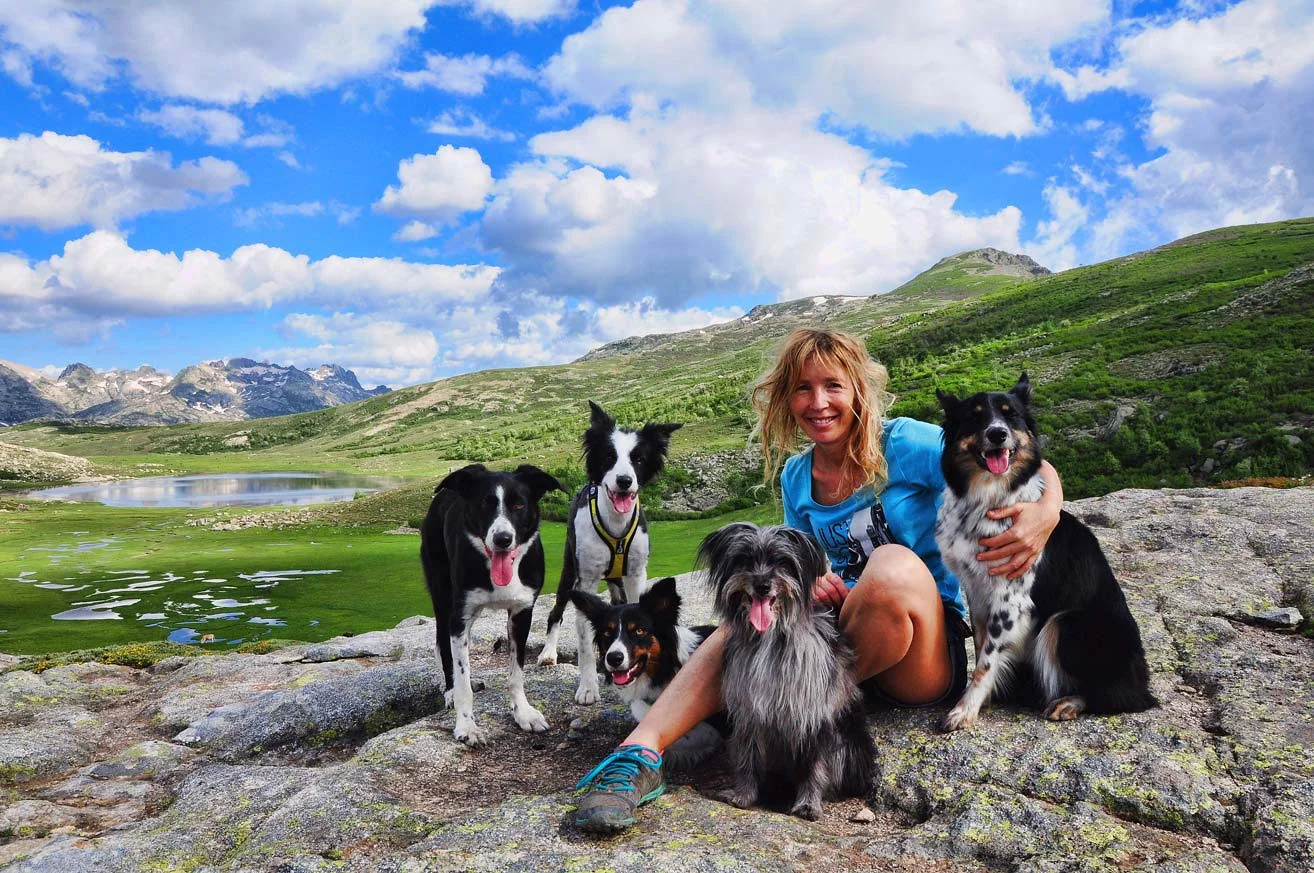Silvia Trkman is a running contact (RC) legend, who started teaching RC in 2002 when everybody believed it was impossible. But what makes a person try something that isn’t encouraged by anyone?
“I guess I just never believe things people say - if not supported with very good arguments or proofs. I always do my own thinking, testing and experimenting, and for me that’s the most fun aspect of agility (or anything else). I'm simply terrible at following the rules and beliefs.”
Frame of mind plays an important role in success with RC training
Agility has changed a lot since 2002, and keeps on changing. And, according to Silvia, so have the attitudes towards running contacts: “When La became famous after winning AWC 2003 by 6 seconds and then again in 2005 by 5 seconds, many people were saying "yeah, but it's just because she’s small". But some started to believe in the possibilities of training RC. And now there is no doubt anymore that it can be done. And, in effect, in many countries it's the only way of doing contacts now.”
This demonstrates the importance of mental aspects in learning and being able to do things: “So many people can train RC now, because their frame of mind has changed and they have started to believe they can do it.”
Silvia changed to target - with speed
According to Silvia, you can get good working RC with 3 to 5 months training, depending on the dog, and of course, the training. It seems different methods for RC keep appearing. According to Silvia, the methods are all, in the end, pretty similar with some personal touches.
Silvia taught RC for a long time without a target, with a method based on running evenly with full speed. Now, however, she has changed to teaching with a target. But what made her switch? “I like experimenting, so I wanted to try that too. What I love most about the target is that you can do so much away from DW and keep it super safe and easy on the dog’s physique.”
“What I love most about the target is that you can do so much away from DW and keep it super safe and easy on the dog’s physique.”
Silvia’s personal touch to the target method is adding speed early on. “I like speed and have most fun when doing speedy stuff! I've also seen way too many dogs being trained with very little speed at first who either never added speed - or added both speed and leaps together. Hitting at speed is just very different from hitting without speed.”
RC teaching with or without target?
So many people ponder between teaching RC with or without a target. Silvia has now experienced both and gives us a list of the most common challenges with both.
Challenges, when teaching without a target
You need more room
You need more equipment
More repetitions on a DW are needed
Different exits can be harder, especially for some dogs.
Challenges, when teaching with a target
Some dogs not adding speed
Some dogs switching to leaps when speed is added
The problems connected with target training can be solved by adding speed earlier on, so this is Silvia’s preferred way now, which she uses in her classes as well.
Do RCs increase risks for agility dogs?
Silvia doesn’t think RCs increase the risk of injury in agility: “I've seen way more 2on2off dogs struggling with staying on a DW than RC dogs. I think RC dogs have a much better understanding of how to manage that width with speed and how to load on safely.”
“My 6 last agility dogs have all had RCs and in trials, only Bi fell off once. And La got blown off by the wind once. Le never fell off in her life, but had a strange problem at the latest EO, on a perfectly safe approach, that ended with her jumping off - we think she hurt her toe on the see-saw just before that and that threw her off balance on the DW.”
Instead of worrying about dog walk safety, Silvia is concerned about metal wings, tunnels and surfaces: “I've seen way more accidents with those than with the dog-walk.”
Do RC for the fun of it - not just for being competitive
Silvia thinks that doing RC just for being competitive is the wrong starting point for training. “If you want RC just to be competitive, then don't do it. Do it for the fun of it, for the thrill, for the challenge.”
“If you want RC just to be competitive, then don’t do it. Do it for the fun of it, for the thrill, for the challenge.”
When asked what she wants to say to people who are struggling with RC, Silvia has a clear answer:
“Don't give up - it can be frustrating at times - but it's all worth it when you get there! It’s a bit harder to train than 2on2off, but way easier to maintain. And yes, every dog, of all sizes, can learn RC, you just need to adjust to each dog a bit, of course.”
Use AgiNotes to track your RC training!
Save your notes, videos and course maps neatly in one place. Read more and try for free.
Other interesting articles about running contacts and agility in general
The secret of fluent running contacts: An interview with Anne Lenz
An interview with Jenna Caloander: How to turn your agility failures into strengths

